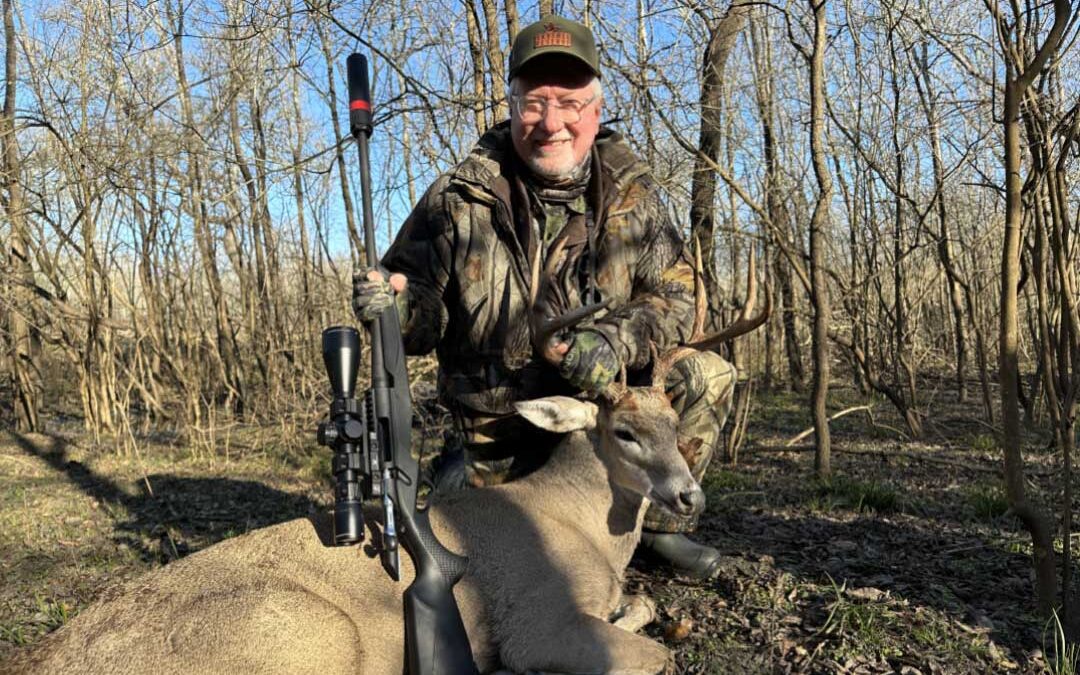I’m 10 years old and lying on the grass in the backyard of my grandfather’s rambling South Carolina farmhouse some 65 years ago. I’m staring straight up. The sun has just set, and the late fall sky is an imagination-inspiring, vibrant palette: bright yellow-orange in the west blending evenly to greenish blue above, then turning dark purple to the east. Over the pumphouse, through bare pecan tree limbs, I see long V-shaped skeins of waterfowl, their tiny dark forms peppering the colorful canvas. I lay there for an hour, awed at first by the seemingly endless migration. But now, the night sky has gradually turned a deep translucent blue, and I can see into its pond-like depths. Here, 11 miles from town, there is little light pollution, so the stars and crescent moon shine clear and brilliant.

The air cools and I’m trying to imagine how far away those planets and stars are, when out of the blue, I remember from my fourth-grade science class that there really is no such thing as up or down, that gravity, an almost magic force we still don’t fully understand, is the only thread holding me, my family and even the old farmhouse to this earth. Suddenly, the thought of falling into the sky becomes real. And a bit frightening.
I’m getting cold when a dim yellow light flickers on, and the back porch screen door spring stretches, squawking loudly. My grandmother’s voice drifts down to me with a comforting, “Hon, come in out of that cold, and eat your supper.” Then, without taking another breath, “I declare, you’re going to catch pneumonia lying on the ground like that!”
Fast forward most of a lifetime: It’s mid-morning on a Thursday. The Boeing 737 surrounding me glides smoothly down from the heavens to land in Dallas, Texas, where I meet up with Brooks Hansen of Camp Chef and Kevin Steele of Outdoor Sports Group. We shake hands, load luggage and ourselves into a rental car to drive an hour and a half southeast, away from the big city lights, to the rural cattle-farming community of Trinidad and Skyfall Reserve.
“Skyfall,” (Don’t you love that name?) is a premier waterfowl, dove and whitetail deer destination fronting the winding Trinity River for almost two miles. There, we’ll join NRA’s John Draper, Benelli’s Tim Joseph, Mark Sidelinger, president of Media Direct and Mike Schwiebert, who owns 832 Marketing. We’ll hunt ducks, boar and whitetail deer.
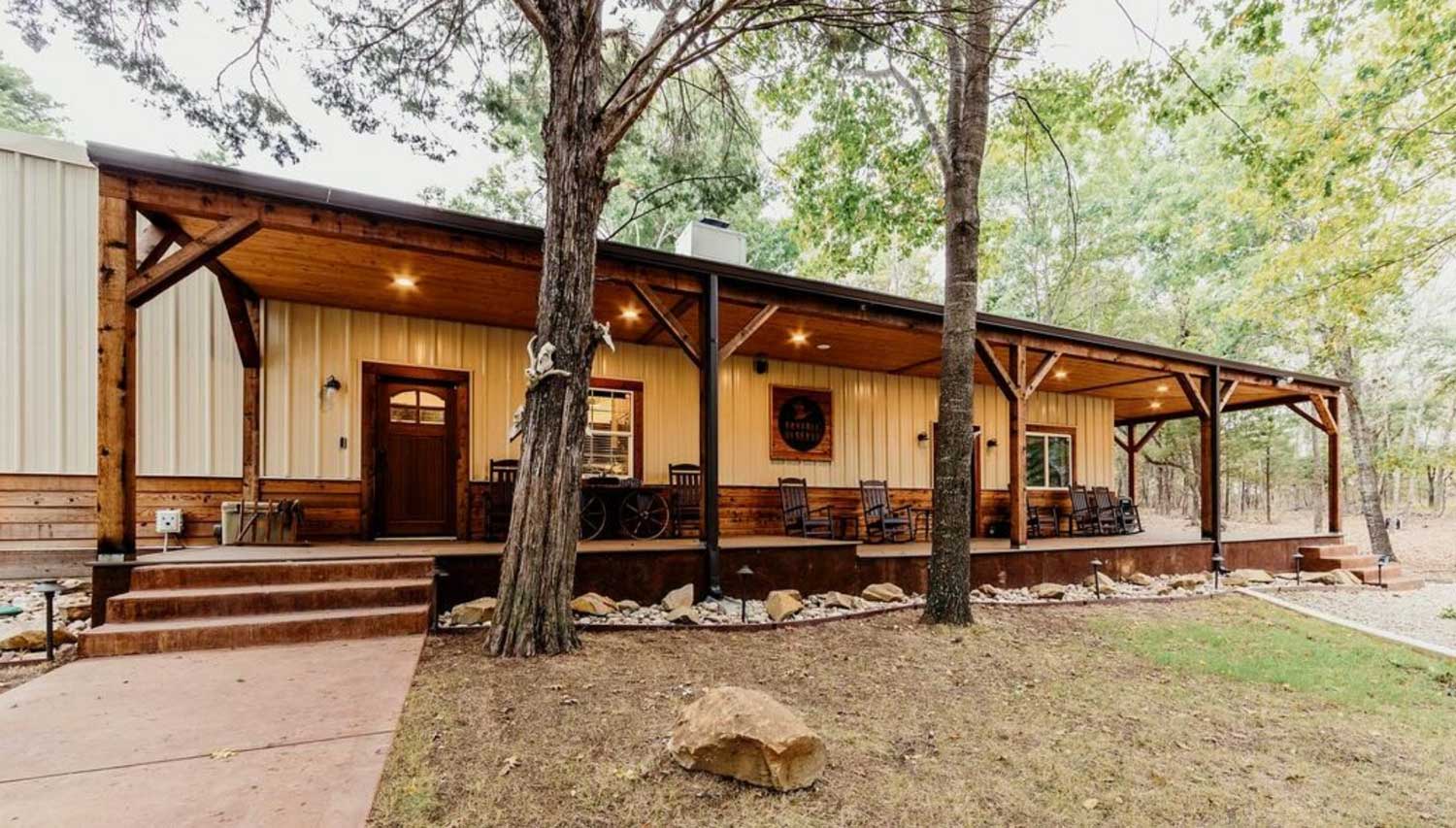
From outside, the lodge and surrounding buildings appear as simple, khaki-colored, metal-clad structures. Inside, however, as they say in Texas, it’s a whole ’nother story. It’s not palatial, mind you, just extremely well-furnished and tastefully decorated with ranch implements found on the property, photographs, posters of Native American chiefs, Georgia O’Keeffe-like steer skulls, art and guitars that reflect owner Steve Rokks’ music background and his current work in the commercial film industry. The place exudes the wood-paneled, worn leather-seating comfort that most sportsmen treasure. We each have our own bedroom and modern bathrooms just a few steps down the hall.

After a brunch worthy of a Scottish lord, we take ATVs out to the range to brush up on our wingshooting skills. First, however, Tim Joseph gives us a demonstration on the shotgun we’ll be using on Skyfall’s waterfowl: Benelli’s newest iteration of its 30-year old masterpiece, the super dependable, Super Black Eagle 3, now in 20 gauge. After Tim’s helpful instructions, it’s off to the sporting clays course.
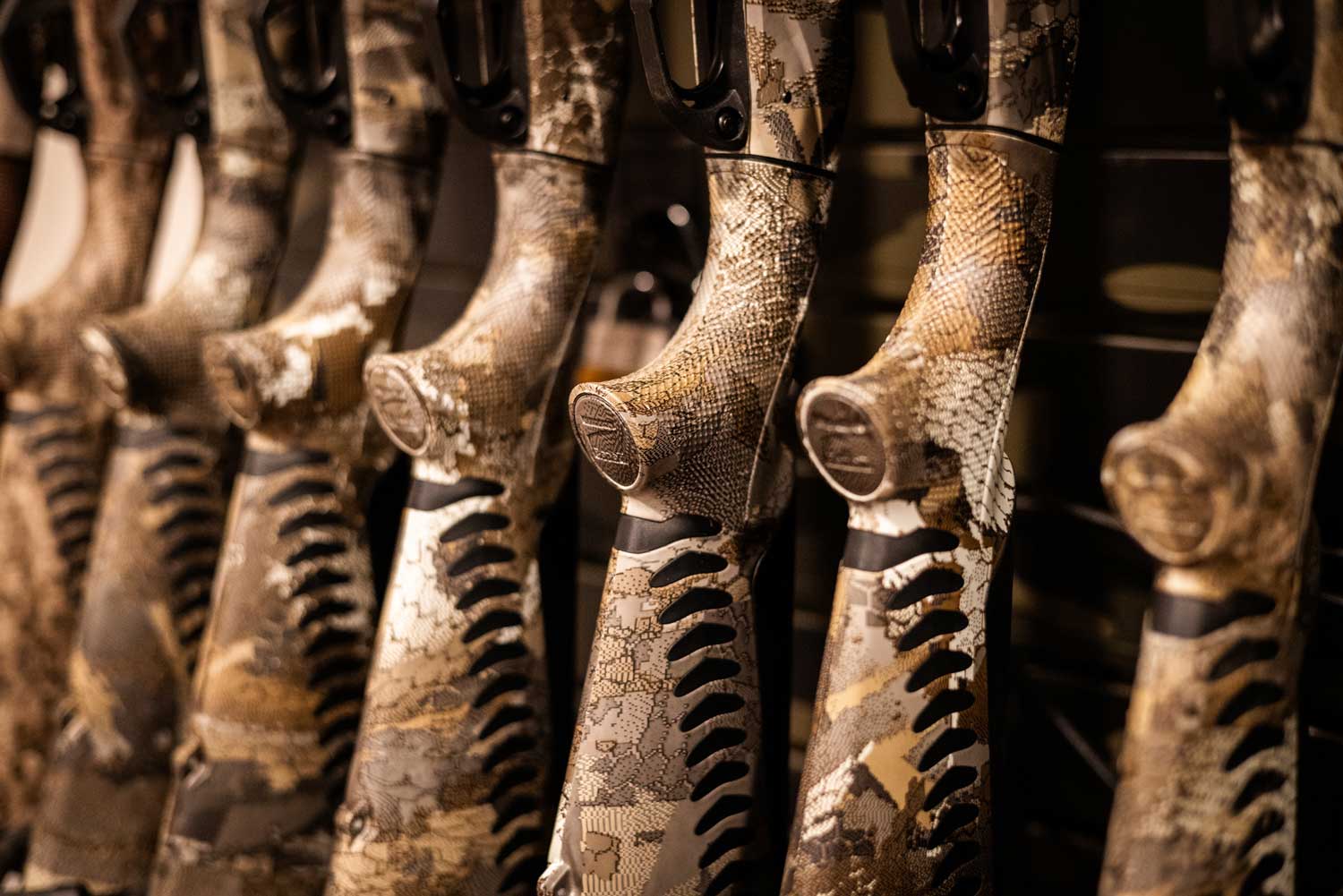
At first, my side-by-side-trained fingers fumble around a bit and the bench-seated audience of compatriots behind me is polite enough not to laugh too loudly. Soon, however, I learn how to operate this smooth, lightweight Benelli auto, and fewer clays escape intact.
At a measly 5 pounds, 14 ounces, this semi-auto comes to shoulder extremely fast, something that will prove even more valuable later when aiming at live targets. Lastly, I discover that the safety switch and action release are right where they should be. The more I shoot the SBE 20, the more proficient I become at hitting the clay birds. This is an easy gun to love.
Back at the lodge, after drinks and hors d’oeuvres, we are treated to a feast. Always delicious, each of the meals starts as a down-home basic but arrives with surprise twists. The mac and cheese with chunks of sausage and jalapeno are incredible and I don’t even like mac and cheese. Buttermilk biscuits are branded Texas-like with a Skyfall logo. I ate too much, and I’m sleeping comfortably when a heavy rain awakens me, but I soon drift off again.
Morning arrives cold and damp, so we dress in insulated clothes and rain gear. The short ATV ride is muddy and slick. Then, using flashlights, Kevin, Brooks and I wade through nine inches of nearly freezing water to get into the blind. Thankfully, Dryshod boots keep my feet warm while living up to their name. Once in, the elevated blind is roomy and comfortable. Our guide, former Navy SEAL Team 4 member Brandon “Tuck” Tucker, carefully places the decoys. Waiting in near darkness, we try to see through the fog. In the meantime, we eat warm breakfast burritos and drink hot coffee. Life is good.
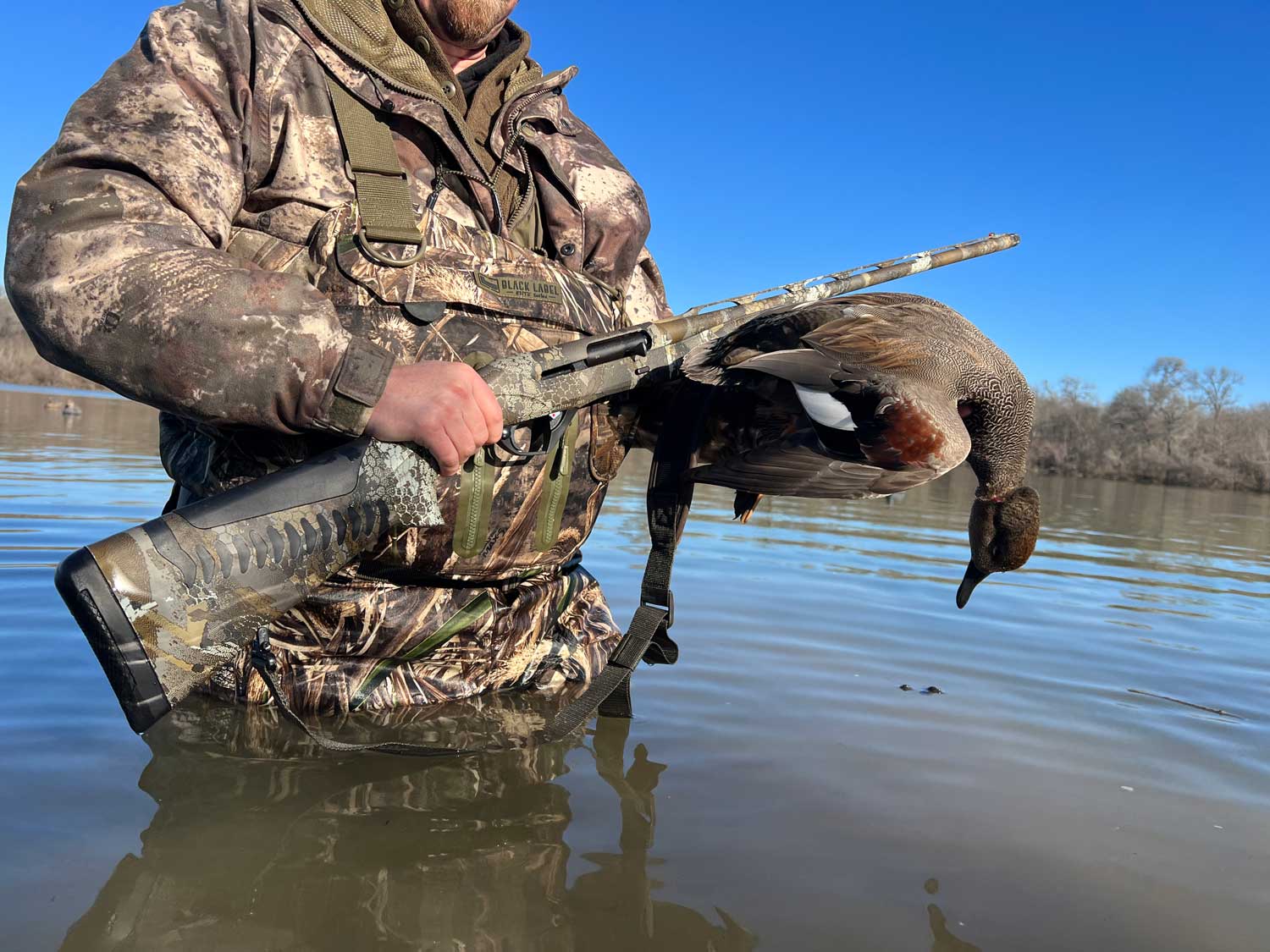
As daylight begins to illuminate a cloudy, gray morning, Skyfall’s 31-acre lake reveals itself. No, this is not some “put and take,” penned-raised duck outfit where you’ll slaughter dozens of dumb ducks. These are wild, free-range birds winging southward down the Midwest flyway to Mexico. Not their first rodeo, these waterfowl know a thing or two about blinds and hunters, and are suspicious of any slight movement, bright face or odd color. I swear, I think they see the reflections of my glasses’ lenses. All morning, we hear other guests firing away. But Kevin, Brooks and I watch dozens and dozens of birds land well out in the lake, safely out of reach. By lunchtime, Kevin and Brooks have shot a few. Sitting in the middle, I’m probably being overly polite and haven’t fired a shot.
Back at the lodge, lunch is so good, I eat an embarrassingly large amount. Usually, I bail out of bed about six in the morning and jog three miles. No chance here. So, I can feel myself putting on weight and wonder if by tomorrow I’ll even fit in the lodge’s waders.
Since we’ll hunt boar this afternoon, Tim gives us lessons in safety and in the operation of the 243 Win.-chambered Benelli Lupo rifles that we’ll be using. If you’re like me and haven’t entirely kept up with all the new technology surrounding modern firearms, you’re in for a shock. The Lupo, first introduced by Benelli in 2020, is a technological marvel, every bit as competent as its well-respected shotguns. Take a gander at benelliusa.com. Migrate to the manual, scroll down to the English version and you’ll see just how easy they’ve made it to adjust cast, drop, trigger to grip, length of pull, etc. The bottom line is that a Lupo can be made to fit most anyone perfectly. This is essentially a custom rifle.
Skyfall has an excellent gun room with four shooter-accommodating bench rests and a huge roll-up window that looks out over a 100-yard range. After the lesson, we take turns punching holes in paper targets. It takes me a few shots to get comfortable with any new rifle. This one is no different. While I’ll never qualify for the Olympics, at 100 yards my group indicates that I should be able to kill what I set my sights on.
After acclimating to the Lupos, several of us hang around for an optional refresher course in pistol-shooting. Truthfully, from my standpoint, it was as much about the instructor as the need. I certainly hope I never have to use that 30-minute-long lesson in a life-or-death situation, but working with guide Terry Houin, former Navy SEAL Master Chief, and having him spend time helping me improve my pistol marksmanship, was one of those priceless, spur-of-the-moment events I’ll never forget. In addition to guiding for Skyfall, Terry is the founder and lead instructor for The Precision Collective, which has a mission to help individuals upgrade their knowledge and proficiency with a variety of weapons platforms. Thanks Terry!
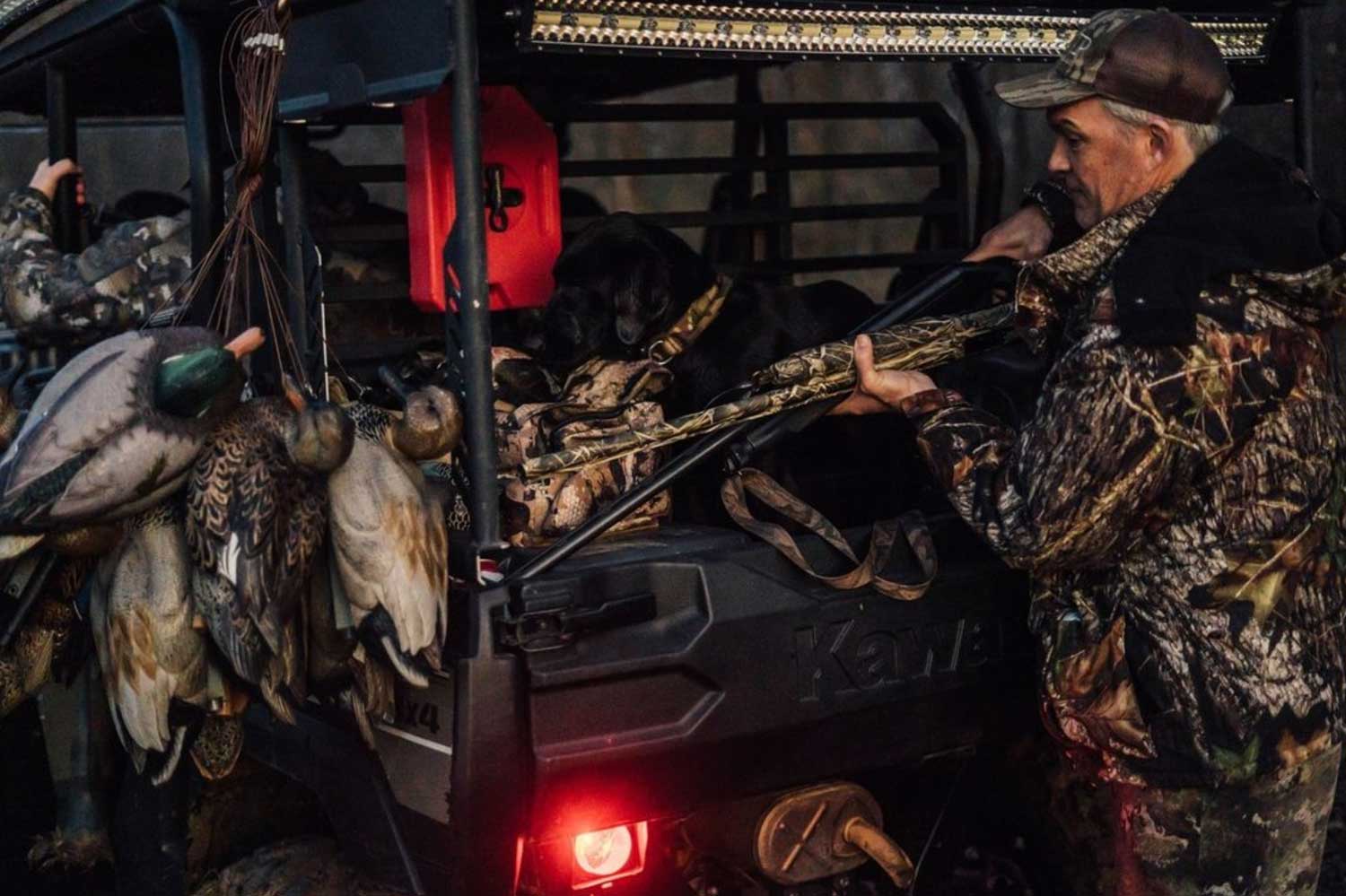
After another incredible dinner, it’s off to hunt hogs in the dark. My guide is Jackson Steorman, Skyfall owner Steve Rokks’ college-student son. Using thermal scopes, we search an open food plot in front of us and carefully scan the forest 75 yards away for an hour and a half. We never spot a hog, but I see where they’ve been. I hear other hunters shoot. But the only living thing I notice from the blind are birds and a cautious racoon at the edge of the woods. On our way to and from the blind however, whitetails, some sporting nice racks, flash their namesakes and bound out of the ATVs headlights and into the swampy darkness. Should I be disappointed? Not at all. It’s not every day you get to talk to an appreciative 19-year-old with his head in exactly the right place. Though, as we arrive back at the lodge, I’m wondering if the hogs could hear us whispering in the enclosed fabric blind.
It’s Saturday morning, pitch dark outside, when Steve, Mark, Tim and I wipe dew off the windshield of the ATV and climb aboard. Armed with flashlights and the SBE 20s, we putter off into the muddy darkness. Twenty minutes later, we are seated in another duck blind, this time in wooded timber. I’m thinking, I’ll have to shoot fast, but at least I didn’t have to put on waders. And, oh yeah: No More Mr. Nice Guy.

As Steve carefully places decoys by flashlight, I look out into the near darkness. Fifty feet in front of me, a massive oak grows out of the flooded edge of Skyfall’s lake. Ancient limbs reach high into a deep navy-blue sky, reminding me of that evening on my grandfather’s farm. A crescent moon glows brightly through the old tree’s branches, and stars twinkle from fathomless distances. Well, almost fathomless. I eventually learned from college physics what a parsec is. Bear with me, this is only going to take a second: When Earth travels half the distance of its diameter around the sun (Its radius, or the approximate distance it travels in 3 months’ time), and a foreground star appears to move one second, of one minute, of one degree, (of the 360-degree arc), against background stars, the distance of that star from our sun equals one parsec, or about 3.26 light years away. You can thank me for that if you ever watch another science fiction movie.
As the sky grows brighter, we begin to see ducks flying all around us. Steve is sitting to my left, Tim and Mark to my right. Out of hopeful caution, I place my still-warm, half-eaten breakfast burrito on the shelf in front of me.
Then it begins, lightning fast. Blue-winged teal rocket overhead on my right. Mallards and greenwings descend from the skies. I hear Tim and Mark fire just as I glimpse movement to my left. Dodging trees, a wood duck set on landing among our decoys jets through the lower limbs of the old oak. There is no time to think, only to react. The ultra-light Super Black Eagle 20 gauge is up to that task and is on the woodie in a fraction of a second. As I push the safety in, I’m already squeezing the trigger. Head feathers fly and the duck tumbles out of the brightening Texas sky and into the shallows of Skyfall’s lake. I won’t say I was shocked, but I certainly don’t think I’d have made that shot with one of my old, heavy doubles. It simply had to happen in a nanosecond. New technology does have its advantages.
As Steve’s retriever fetches our birds, I hear, “Nice shot!” from the guys. The shooting continues much of the morning. By lunchtime, we have a respectable bag that also included pintails, gadwalls, scaups and canvasbacks.
After another sensational lunch back at the lodge, we have choices: Boar or deer for the afternoon? After today, there’s only one day left in the deer season. And since I’ve not killed a deer this year, the choice for me is easy. Young Jackson and I will continue our whispered, unfinished conversations about college, publishing and working with his dad, all while keeping watch over food plots and forests. We go out early, but again observe nothing until we are heading back on the ATV, and watch as several big bucks run for cover in the darkness.
That night, the chef cooks steaks and fixin’s for us on a Camp Chef grill. Now, I’d never claim to be a food expert. But I’ve eaten steaks in Kansas City, Minneapolis, Winnipeg, fancy restaurants in San Antonio, Austin, New York and in castle dining halls in Scotland and Ireland. And I’ve never had a steak any better than this one.
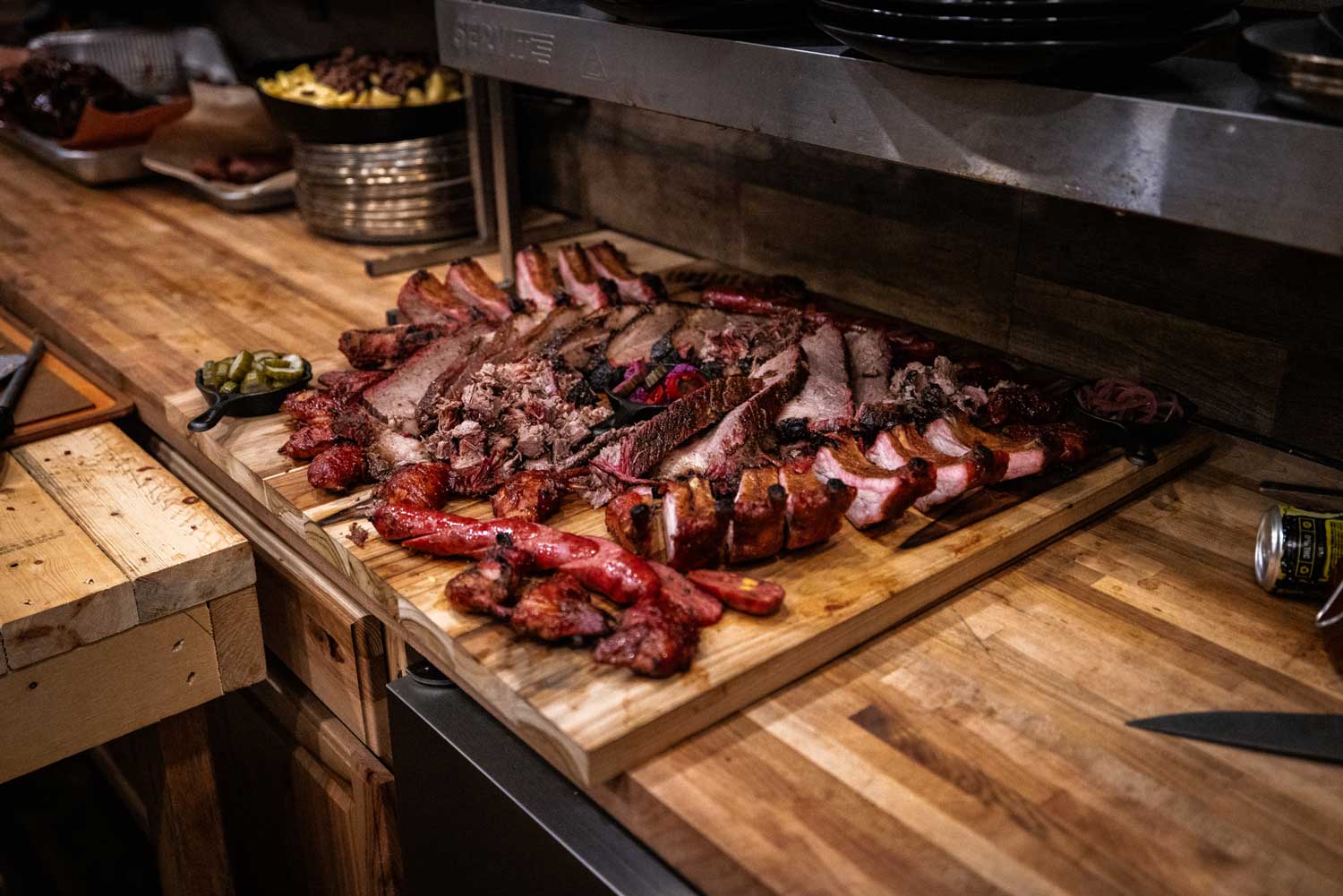
After dinner, we are entertained by thrilling firsthand war tales from our two former Navy Seal guides. Later, as I ease into Skyfall’s plush bed, I’m thinking, I need to become better friends with Camp Chef’s Brooks Hansen, maybe I can cook steaks like…zzzzz.
I sleep like a fat baby.
Sunday we’re up early. It’s the final day of deer season and our last day here at Skyfall. This frosty morning’s hunt will end a great trip. After lunch, we’ll need to drive back to Dallas in order to fly home late this afternoon. So, as you might imagine, there’s just a little pressure on us if we want to shoot something with fur instead of feathers.
I’m dressed in bulky, insulated clothes (yep, they are a little tighter) and carrying the Lupo. Jackson and I scrape ice off the ATV’s windshield, then drive 20 minutes to a hard-shelled blind at one end of an open food plot. In the starless, moonless black morning, I can see only the area lit by my flashlight. Cloudy, I think. The blind, however, is extremely comfortable and I’m positioned perfectly.
“This plot is 210 yards long,” Jackson whispers almost silently. “And there’s another plot a quarter mile beyond this one,” he indicates, pointing directly in front of us. While he’s saying that, I have an odd premonition: Something’s going to happen here. It’s a strange anticipatory feeling that sends chills down my spine. Good or bad, I can’t tell, but I can feel the hair on the back of my neck come to attention.
At first, I can’t see anything, not even with my binoculars. After 20 minutes, the sky gradually begins to lighten. Finally, I can see the other end of the food plot and make out the darker tree line beyond. Oddly, however, the sky almost immediately begins to darken again. I look up to see an unusual, cloud-like formation above us. It seems to be descending. Then, gradually, the tops of the trees disappear.
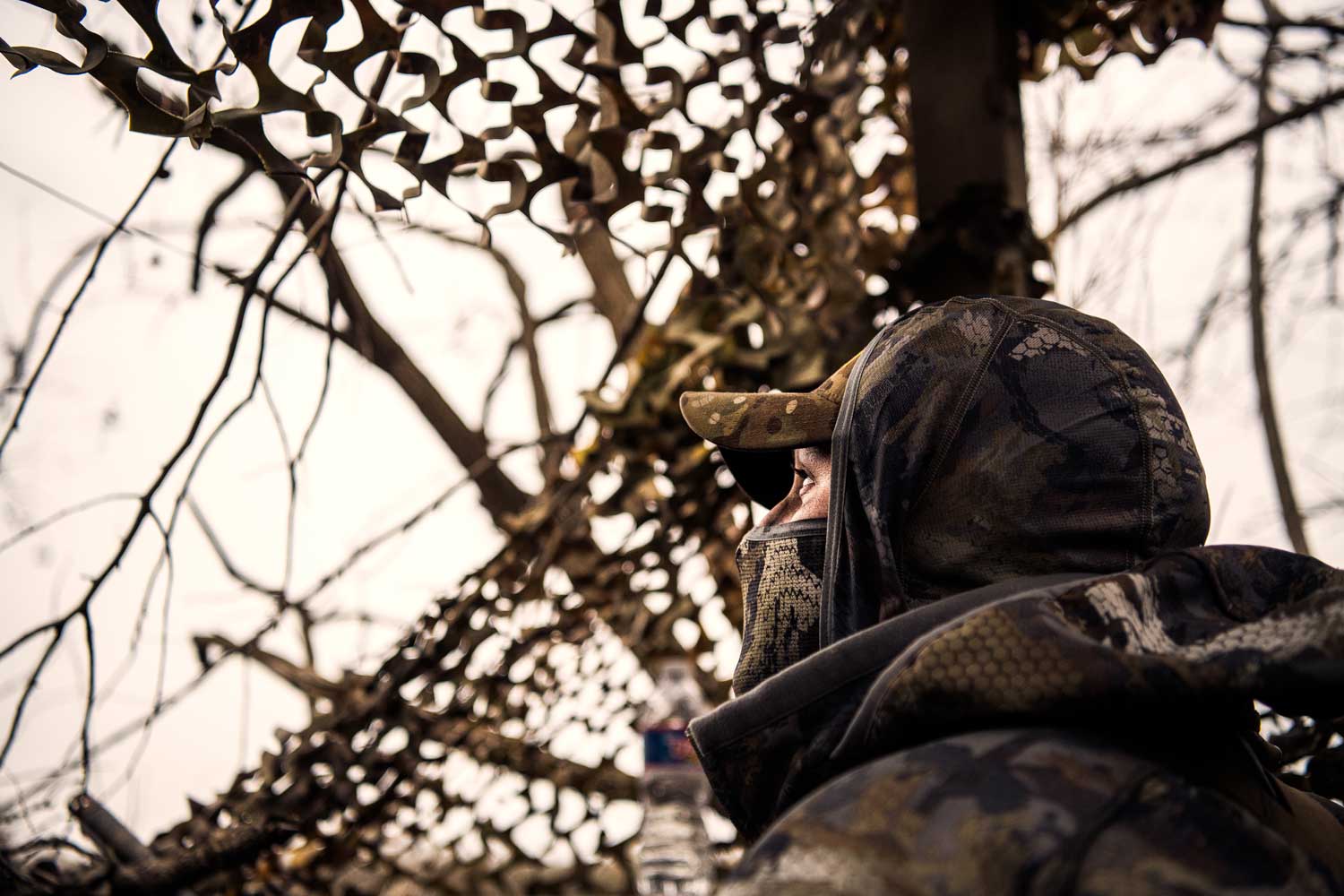
Everything turns monochromatic. Sky, grass, woods blend together as an almost colorless, pale gray cloud continues falling. The temperature drops and through the sight window I feel an odd chill enter the blind. All I can see at the far end now, even with my binoculars, are the dark gray bottoms of tree trunks beyond the open plot. Within a few minutes everything in front of me has taken on the color of frost. In the dismal light, I’m mesmerized as I watch trillions of tiny crystals form ever lower, thinly blanketing everything in front of me. Reflected light from somewhere above causes the crystals to glisten like tiny stars. This strange ice-fog descends to a foot above the ground where it hovers ghostlike in windless air.
Ten minutes of glassing through my binoculars, and I spot four legs moving beneath the cloud 200 yards out. Then more legs. At least three deer are milling around an old feeder. I can’t see the bodies at all, but young Jackson, looking through his binoculars, whispers, “The one on the far right is a buck!”
“Any size to him?” I ask, thinking, Thank goodness for young eyes!
“Can’t tell yet.”
We watch for a 20-minute eternity. My pulse rate ratchets steadily upward and questions are racing across the bottom of the TV screen in my head: Will the fog descend another foot and hide them? Will they wander away? Will they catch wind of our scent and evaporate into the forest? Another five minutes pass before one of the animals begins walking in our direction.
“That’s the one! That’s THE buck!” Jackson exclaims, peering through his binoculars and trying to muffle his fervid words.
Usually, I’m able to contain my excitement when hunting. Killing an animal cleanly requires composure in my mind, and I’ve always been able to control my emotions when hunting. Not this time. My pulse is pounding in my ears as I watch the animal’s legs advance and, ever so gradually, he materializes out of the icy mist. Higher in the fog, I can barely see his antlers, which are barely discernable against the color-matched background trees. Cautious, he stays within a bound or two of the thick woods and swampy brambles on the opposite side of the elevated plot. I swivel the Lupo on its tripod to get a look through the scope and better position myself. Finally, I can see him! He’s big. Not some monster, but a big-bodied, healthy, free-range, 8-point buck—exactly what I want. Now, I’m really excited.
Quartering cautiously toward me, the deer crosses behind a copse of oaks halfway between us. With both eyes open, I follow him, unconsciously using parallax to judge distance. I swing the rifle’s barrel a little more to the left in order to make the interception. I’m laser-focused on a one-foot by one-foot square 10 feet in front of him. When he appears from behind the frozen trees, I hold the scope’s crosshairs on the front of his moving shoulder, flip off the safety and ease my finger to the Lupo’s ultra-smooth trigger. He’s very close now, perhaps 70 yards.
To force myself to calm down, I begin my old ritual: Slowly, silently saying, I’m – going – to – kill – this…, as I gently squeeze the trigger. It’s a way of restricting myself to a pace where I never quite know when the gun will go off.
The sound of the Lupo is a silence-destroying, lightning-like crack that crashes over the frozen terrain. A 100-grain .243 bullet built on years of scientific data and rigorous testing launches itself, crossing the food plot in less than 74/1,000 of a second. But I barely hear the sound or feel the rifle’s reaction. Immediately, I see two does and a nice buck bound off to my right. I’m thinking, How could I possibly have missed? Besides, I’m certain that I heard the unmistakable “slap” of the bullet hitting something. But I can’t see the deer’s body anywhere in front of me, so I look at Jackson, questioningly.
Perceptive kid.
“Your buck went to our left,” he says confidently. “I heard it hit him.”
The other hunters heard it too, and soon text Jackson that they are on their way over. Oh, great! I think. Now, if I missed, or worse yet, wounded him, I’ve got an audience! But 20 minutes later—a lifetime of me questioning myself—six of us are standing over the buck’s 162-pound body. It’s lying just downhill out of sight of the blind, not 30 feet from where I shot him. As I pose for photos, I can tell the other men are genuinely pleased that I got a deer. As the oldest one in the group, I’ve been on the other side of the camera many times and felt the same sense of pride at another hunter’s kill.
Steve Rokks may own Skyfall, but he’s not the kind of guy who’s afraid to get his hands dirty. With the exception of pouring the concrete, Steve built this place himself using his father’s mantra: Never hire someone to do what you can do for yourself. His son Jackson and I are trying to help, but this is really a one-man job, so he’s dressing out my buck, up to his elbows in blood and gore. After 10 minutes of cutting and tugging on entrails, he slices through arteries and removes the animal’s still warm heart. My bullet is lodged inside.
Steve looks at me, smiles and pointing to the heart’s entrance wound says, “Great shot, Duncan,” then, holding it up between us, “Don’t see too many like this.”
I shake his bloody hand and reply, “Skyfall, is an exceptional place Steve, one for the memory books. I can’t thank you enough for creating it.”
Later that night, 871 miles away as the ducks fly, the moon has my backyard aglow. Too tired to fall asleep, I’m staring up through the skylight in my bedroom and I can see stars shining brightly against dark purple heavens. I’m thinking about the morning’s hunt, Skyfall and the people who, for a short time, gathered together in that part of Texas. It occurs to me that the emotion of the kill for hunters is as old as our species. For eons, it meant that we would survive, and live to hunt again. And it created bonds so strong that it still links hunters today, like gravity, in the most magical of ways.

